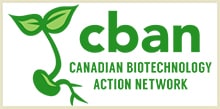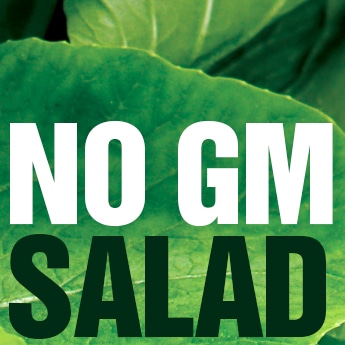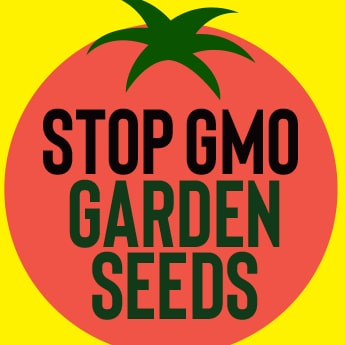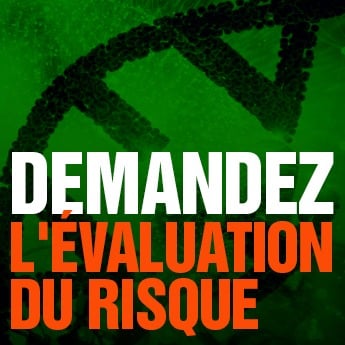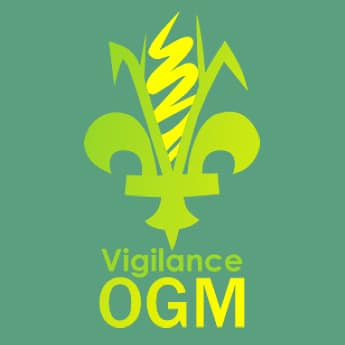Is “Enviropig™” An Environmental Solution?
Excess phosphorous is a product of industrial hog production and managing this pollution is a cost of production for intensive livestock operations in jursidications where phosphorus is regulated. When pig manure spread on farmland exceeds what crops can use while growing, the excess phosphorus runs off as fields drain into surface waters, where it promotes excessive algae growth. The algae forms thick mats, blocking sunlight from reaching deeper waters, and when the algae dies and decomposes it uses up dissolved oxygen in the water. Deprived of oxygen, fish and other organisms die. In addition, often it is blue-green algae that grows in phosphorus-rich waters, producing cyanotoxins which can kill livestock and pets if they drink the polluted water.
Phosphorus pollution is a problem specific to the industrial model of hog production where tens of thousands of pigs under one roof produce too much manure for the surrounding land to use productively. Such intensive, concentrated production means that operations import tonnes of pig feed from distant sources and must then pay the cost of disposing of millions of gallons of liquified hog manure. Operations prefer to spread manure on land within a mile or two of the industrial pig barns because it is expensive to transport heavy liquid manure to more distant fields.
Enviropig™ is designed to reduce the amount of phosphorous coming from the pigs themselves, so that factory farms do not have to pay for other measures such as reducing the number of pigs they raise in one place, changing feed ingredients, trucking liquid manure longer distances, dry composting manure, or expanding the area of land for spreading manure.
There are solutions, however, to the environmental and economic problem of excess phosphorous that do not involve genetically engineering animals:
1. Disperse hog production and reduce the size of operations.
In smaller hog production units that are dispersed over a wide geographic area, phosphorus in pig manure does not become an environmental problem, but is used instead as a valuable fertilizer. Phosphorus is an important plant nutrient and an essential element of soil fertility in farming. Animal manure is an important source of phosphorus for growing field crops, including those used for pig feed.
But Canada’s hog industry has undergone a fundamental change in the past 20 years. Previously, hog production was largely family-farm based and of a very modest scale, with tens of thousands of farmers earning a livelihood raising pigs. Now, the hog industry is dominated by a few giant hog production corporations, some raising the pigs themselves and others contracting farmers to raise pigs for them. The pigs are raised in giant barns that house thousands of pigs together and store liquid manure in pits or tanks close by. Smaller independent farmers have been forced out of business through loss of market access and unfair competition from vertically integrated companies that own hog barns as well as packing plants and other related businesses. Hog production has doubled during this time but there are many fewer farms, each raising many times more hogs.
This dramatic structural change was intended to make Canada a major supplier of hogs on the world market, instead of just providing pork and pork products for Canadians. However, in reality, Canada cannot compete with other countries that have lower labour and feed costs. Trade agreements also mean that cheap pork from other countries can enter our domestic market. The result is that Canada’s hog producers have been forced to sell below their cost of production for many years. Small producers and smaller companies have retired, sold out, or gone bankrupt. Only the biggest producers and some contract producers are left, surviving almost exclusively on government subsidy programs and bailout packages.
In addition to solving the problem of phosphorous pollution, with so many large-scale industrial hog operations collapsing, a return to smaller, less concentrated hog production – combined with other policies that ensure independent farmers have access to markets, get a fair share of returns, and are not undercut by cheap imports from jurisdictions with weak environmental and labour laws – could also be the solution to the severe income crisis in the hog industry.
2. Change and supplement pig feed
Excessive excretion of phosphorus in pig feces results from feeding the animals grain which they are not able to fully digest. Changing pig feed ingredients, and supplementing it, can provide better feed conversion and cut phosphorus production.
The technological solution of a phytase supplement in pig feed has been available to intensive livestock operations for 10 years and is being used more widely as more jurisdictions regulate phosphorus. Throughout the Enviropig™ research, the scientists have acknowledged that the simple solution of a feed supplement existed. They argued however that Enviropig would be the cheaper option: “Since the Enviropig™ is able to digest cereal grain phosphorus there is no need to supplement the diet with either mineral phosphate or commercially produced phytase…” [iv] The effectiveness of the phytase supplement has increased over the years while the price has decreased dramatically. Research conducted by the Ontario Ministry of Agriculture, Food and Rural Affairs, one of the funders of Enviropig™, concludes that “adding phytase does not appear to add more cost to the diet…Using phytase, replacing protein with synthetic amino acids, and by feeding more closely to the animal’s requirements, nitrogen and phosphorus excretion in pig manure can be reduced by up to 50%.” [v]
